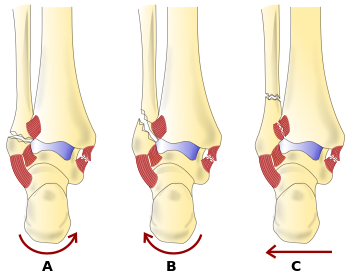Photo Credit: wikipedia.org
Ankle fractures are a relatively common traumatic orthopedic injury involving the two lower leg bones and ankle joint. Among these fractures, the most common type involves a break of the outer lower leg bone (weber B). These fibular fractures are commonly allowed to weight bear early than tibia fractures because they are less important for lower body weight bearing. Common medical practice provides immobilization to avoid excessive weight bearing or forces for 6 weeks following fracture, but smaller studies have not demonstrated a significant increased risk of adverse events if fractures are immobilized for less than the standard 6 weeks.
A large randomized, controlled trial was published in the British Medical Journal documenting the effects of two types of non surgical management strategies for Weber B ankle fractures (Haapasalo et al. 2019). Authors randomized 247 fibular Weber B, stable, ankle fractures to either a 3 week or 6 week immobilization period in an orthosis. Patients were assessed on ankle function, pain, quality of life, ankle motion, and adverse events at 6, 12, and 52 weeks after the fracture. Authors reported no difference in outcomes between the 3 or 6 week management groups except a slight improvement in ankle range of motion and deep vein clot risk in the 3 week group. Patients are encouraged to speak with their orthopedist regarding the best course of action for their individual fracture management.

